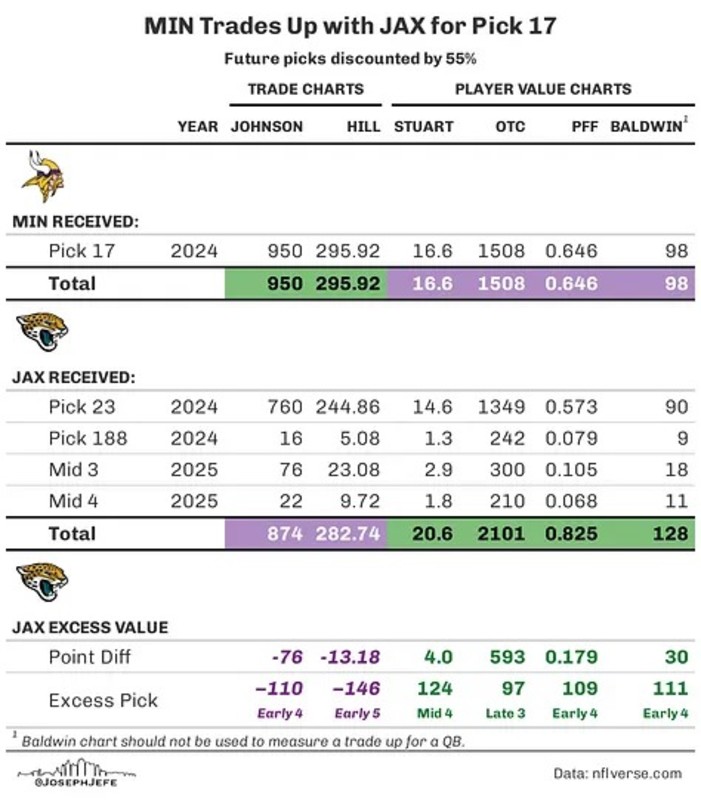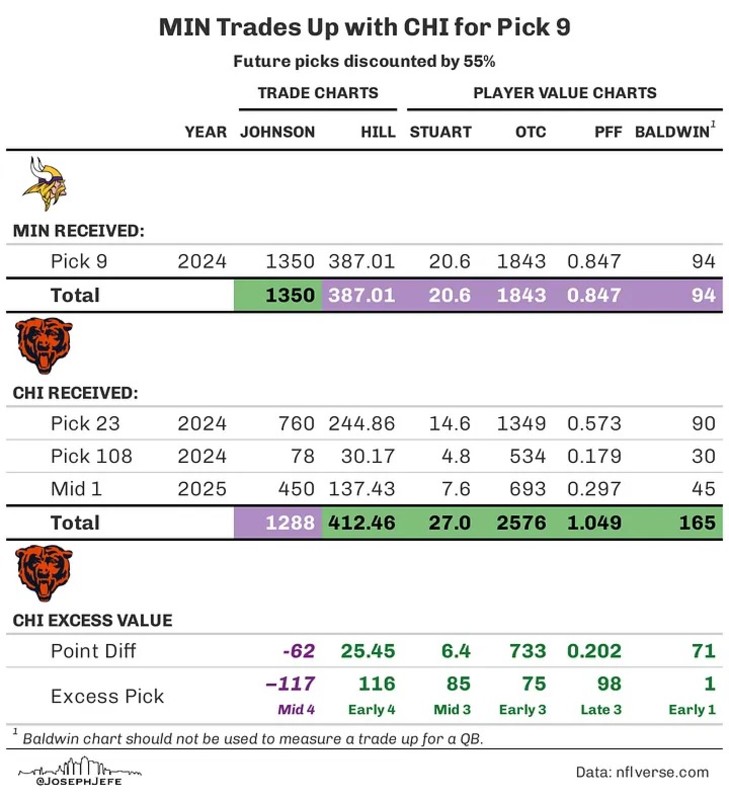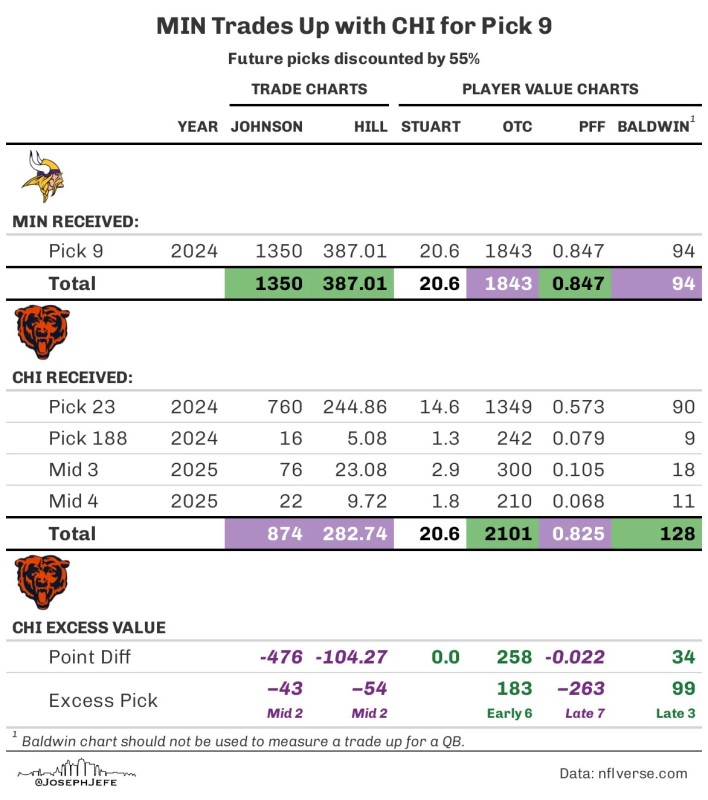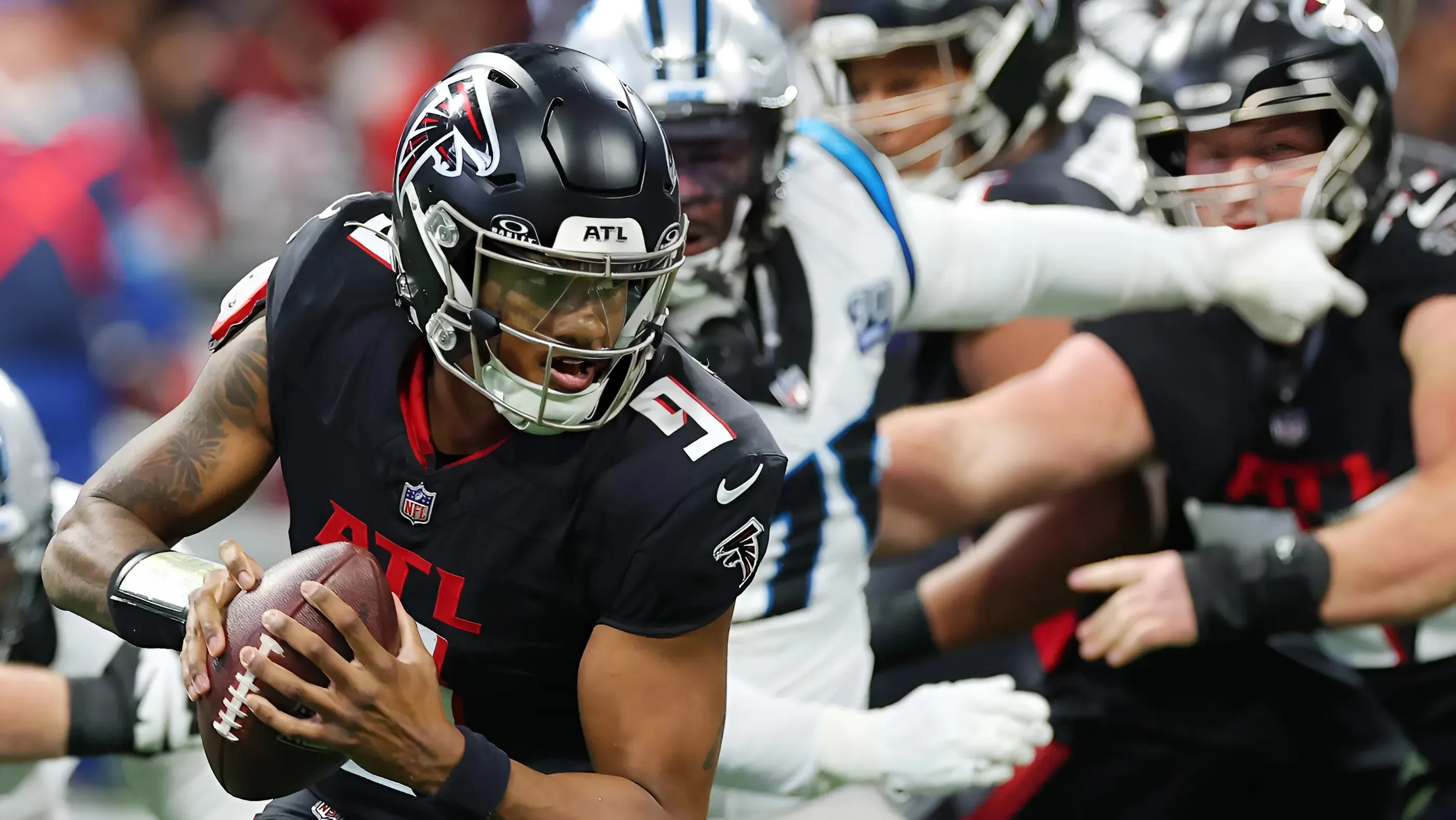
Minnesota Vikings general manager Kwesi Adofo-Mensah has a complicated history with the NFL Draft.
His first NFL Draft had the Vikings taking 10 players, but only three of them are still with the team in the final year of their rookie contracts. It was a tough start, but he rebounded well in 2023, and 2024 looks like it could be even better, but the jury is still out on that.
Kwesi Adofo-Mensah built his own trade chart
One of the interesting elements for Adofo-Mensah is how he's handled trades. The trades he's made have been varied across the board when you compare them to each other with the trade charts. It's why analysts have had such a tough time nailing down what he likes to do.
During his Thursday press conference, Adofo-Mensah gave us some intriguing insight on the draft, including the admission that he built his own trade chart.
"I built the chart myself. I've seen other different charts, and they all take different assumptions that, or quite frankly, this is a hard exercise. How do you value a great player in a great position? You could assign a number to it, right, when you assign that number to it does that incorporate the scarcity of that type of player? If you don't get that player in the draft, you can't typically get that player in free agency. So how do you put a number on that aspect of it? It's in different people at different ways of doing that. And again, I've seen people in San Francisco do it in Cleveland, do it myself, all the different things. And you appreciate the different methods. I think the best thing you can do is understand why each chart is built the way it is, and kind of, maybe, for each decision you make, understand how you're using it for you, and kind of go with that chart value there. It's a great question. It's a fascinating thing. I don't know that anybody's going to solve it, because, you know, you're trying to assign a number to a thing that's not really perfectly easy to do."
The idea that Adofo-Mensah built his own trade chart significantly explains how varied the trades have been, especially how "lopsided" the Dallas Turner trade felt in real time. The Vikings moved up from 23 to 1,7 not for the 17th overall pick, but the ninth-best player on the consensus board. That changes how you view those moves, especially with the context that you don't get those types of players in free agency.
For example, look at the trade they made with the Jacksonville Jaguars last year to get to 17th overall.

The Vikings won on the conventional charts, but lost on the analytical models. That's usually the inverse of what he's normally done.
Now, let's look at what the projected cost would have been to move up to 8th overall.

The Vikings would have lost big time with all the boards built on data, but won on Jimmy Johnson's. Getting up to ninth overall would have cost a lot, but they got the ninth overall player at 17th. Using this information on Adofo-Mensah's trade chart and reading between the lines, the Vikings likely believed they got a steal. Here's what it looks like if the Vikings went up to ninth overall giving up the capital they sent to the Jaguars.

It's easy to see why the Vikings thought they were getting value with the Turner trade.
We don't know the ins and outs of what the trade chart is, but contextualizing it for players and the value they bring versus just the pick itself is a great way of doing business.


-1750900817-q80.webp)
